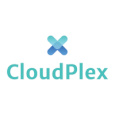Top 10 Kubernetes CI/CD Tools
in Kubernetes , Continuous delivery , Continuous Integration

A CI/CD pipeline in a Kubernetes based environment is usually composed of 4 main components: Version control system, CI system, Docker Registry, The Kubernetes cluster. The coordination and automation of the above pieces make for seamless and continuous software delivery. Here is the list of the top 10 Kubernetes CI/CD tools.
Kubernetes, also called Kube, is an open-source platform used for container orchestration, which is managing the lifecycle of containers in dynamic environments.
Kubernetes is portable, extensible, and scalable. It has become quite common to club Kubernetes with CI/CD (Continuous Integration/Continuous Delivery) tools.
When CI/CD tools are used to deploy cloud-native applications, it streamlines the development as well as the deployment phases. You can make cloud-native applications much more robust if you integrate their development with CI/CD approach.
Continuous delivery in Kubernetes is more efficient compared to the traditional VM deployments. You need not bring down an entire application to update or make changes.
A CI/CD pipeline in a Kubernetes based environment is usually composed of 4 main components:
- Version control system
- CI system
- Docker Registry
- The Kubernetes cluster
The coordination and automation of the above pieces make for seamless and continuous software delivery.
Here is the list of the top 10 Kubernetes CI/CD tools:
1) Helm
Helm is one of the best-known package managers for Kubernetes. It uses “charts,” which is basically a definition of a Kubernetes package and any other dependencies that you need for your app. When you call a chart from the command line, Helm creates YAML files for Kubernetes deployment and then adds them to the cluster. Helm is open-source, which means that you can download, change, and use the charts for your own organization.
The biggest advantage of Helm is that it makes the deployment of complex applications more portable. Helm also supports automatic rollbacks and is easier for developers to understand. The disadvantage of Helm is that it is difficult to set up and maintain.
2) Ksonnet and Jsonnet
Ksonnet (built on the JSON templating language Jsonnet) is a configuration management tool. It provides a way to package your Kubernetes resources, which can be later on used to create the required configuration files for your deployments. Ksonnet is the command-line interface, while Jsonnet is the data templating language used to describe your application.
This tool's advantage is that developers who are familiar with JSON can easily use Jsonnet to deploy their applications. However, there are differences between just using JSON and working with Jsonnet, which a developer would, of course, need to learn.
3) Draft
Draft is a tool for creating cloud-based applications on Kubernetes. It is a build and deployment tool developed by Microsoft. Draft can be used to generate Docker images after your code has gone through Continuous Integration. You can also use it to create Helm charts which generate YAML files used to deploy applications through Kubernetes.
This tool's advantage is that you can combine it with Helm to package applications and deploy them. The disadvantage is that it requires a considerable amount of configuration.
4) Jenkins X
Jenkins X is one of the most popular and powerful CI tools used for Kubernetes deployment. It is an open-source automation tool with built-in plugins for CI purposes. It is written in Java.
You can use Jenkins to continuously build and test your software projects so that it becomes easier for you to make changes to the project. You can use this tool to continuously deliver your project through the integration of a large number of testing and deployment technologies. Even though it is a powerful tool, Jenkins can be complex and prone to errors.
5) CircleCI
CircleCI is another continuous integration and delivery tool. It is a cloud-based tool that includes an API (Application Program Interface) for automatic Kubernetes deployment.
Since it is cloud-based, you do not need a dedicated server for CircleCI.
The advantage of CircleCI is that it uses a number of testing methods like unit testing, integration testing, and functional tests to test any change to the code before deployment. The disadvantage of the tool is that it lacks all the pieces to make it a complete CD pipeline.
6) Travis
Travis is a commercial CI tool, unlike Jenkins. You can use the tool to sign up, link your repository, build, as well as test your applications. You can also integrate the tool with other common cloud repositories like Bitbucket and GitHub.
Travis is a cloud-based tool that cuts out the need for a dedicated server. The tool allows you to test on various machines running different operating systems.
Travis is free for open-source projects, but you will need to purchase an enterprise plan costing about $69 a month for commercial projects.
7) Gitlab
Gitlab is a web-based tool with CI/CD pipeline features. It also has its own repository containing wikis, code review, issue tracking, besides a CI/CD deployment tool. Gitlab is an open-source platform that can effortlessly handle nearly 25,000 users on a single server. It also comes with in-built auto-deployment Kubernetes components and also can support Helm charts.
8) Weave Cloud
Weave Cloud is a CD tool that gives you a fast way to monitor and manage your Docker containers. It also gives a quick way to set up your CI/CD pipeline and Kubernetes cluster. It allows you to deploy your apps with faster rollouts, updates, and rollbacks. This tool works by using Git as a single source of truth for declarative infrastructure and applications.
The downside is that it needs quite a bit of configuration to start working properly.
9) Spinnaker
Spinnaker is an open-source tool developed by Netflix. It manages pipelines and deployments and can also support Helm charts. It is an open-source, multi-cloud tool that provides continuous delivery with great efficiency. The disadvantage is that this tool was originally built to support VMs and not Kubernetes, and hence can be a little complicated to set up.
10) Codefresh
Codefresh is a CD/CD pipeline tool that also supports Helm charts. It allows you to use your own CI and image repository. It helps you build a simple yet powerful CI/CD pipeline. It comes with an extensive set of plugins that help you integrate with your favorite tools. The downside is that third-party tools are set up with their Graphical User Interface, which adds more complications to your pipeline.
Codefresh is a commercial tool and its pricing starts from $34 a month.
Conclusion
In recent times developers have become more familiar with Continuous Integration and Continuous Delivery. You cannot think of creating new software without having a proper CI/CD pipeline. Kubernetes is fast gaining popularity, and all the tools are being upgraded to integrate with Kubernetes. We have tried to compile a list of the most popular Kubernetes CI/CD tools for you in the article above. What are the tools you use to create and manage your CI/CD pipelines? Leave them in the comments section.
Get similar stories in your inbox weekly, for free
Share this story:

Cloudplex
Founder and CEO of Cloudplex - We make Kubernetes easy for developers.
Latest stories
HIPAA and PCI DSS Hosting for SMBs: How to Choose the Right Provider
HIPAA protects patient data; PCI DSS protects payment data. Many small and mid-sized businesses now …
The Rise of GPUOps: Where Infrastructure Meets Thermodynamics
GPUs used to be a line item. Now they're the heartbeat of modern infrastructure.
Top Bare-Metal Hosting Providers in the USA
In a cloud-first world, certain workloads still require full control over hardware. High-performance computing, latency-sensitive …
Top 8 Cloud GPU Providers for AI and Machine Learning
As AI and machine learning workloads grow in complexity and scale, the need for powerful, …
How ManageEngine Applications Manager Can Help Overcome Challenges In Kubernetes Monitoring
We tested ManageEngine Applications Manager to monitor different Kubernetes clusters. This post shares our review …
AIOps with Site24x7: Maximizing Efficiency at an Affordable Cost
In this post we'll dive deep into integrating AIOps in your business suing Site24x7 to …
A Review of Zoho ManageEngine
Zoho Corp., formerly known as AdventNet Inc., has established itself as a major player in …
Should I learn Java in 2023? A Practical Guide
Java is one of the most widely used programming languages in the world. It has …
The fastest way to ramp up on DevOps
You probably have been thinking of moving to DevOps or learning DevOps as a beginner. …
Why You Need a Blockchain Node Provider
In this article, we briefly cover the concept of blockchain nodes provider and explain why …
Top 5 Virtual desktop Provides in 2022
Here are the top 5 virtual desktop providers who offer a range of benefits such …











